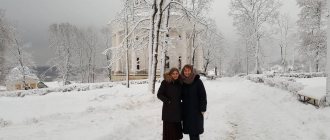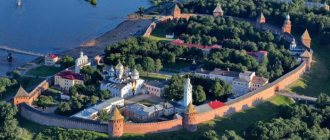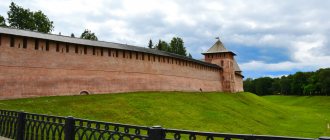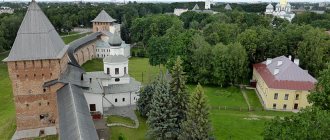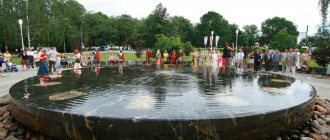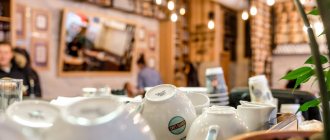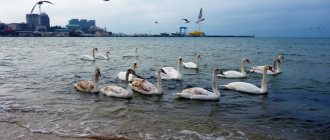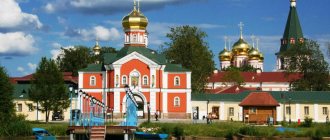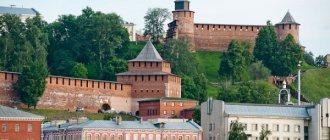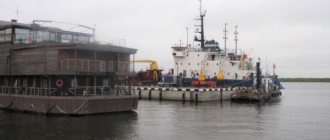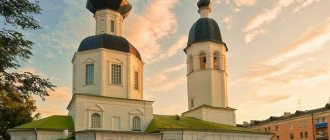Valdai is a land of churches and picturesque nature in the Novgorod region. These lands can safely be called shrines; more than one Orthodox legend was born in the local territories. If you are not so interested in holy places, then the lush pristine nature of Valdai will captivate you. The forests, parks and shores of the Valdai Lakes are especially beautiful in spring and summer, but fans of eco-tourism come here all year round.
Lakes and parks, museums and nature reserves, monasteries, waterfalls - all the interesting things that surround Valdai, in the review of interesting places in the Novgorod region.
Valdai Lake
The first thing that tourists who arrive in Valdai should definitely visit is the lake of the same name, the water area of which stretches for almost 20 kilometers. The average depth is 12 meters, and in some places reaches 60. The reservoir is considered glacial, which indicates its crystal clear water. Ice remains on the water surface from the beginning of winter until May; the lake is popular as a place for fishing, including winter fishing. The pearl of the island is Rowan Island, which can be visited by renting a boat from the locals.
Route
The tourist route around the city of Valdai is quite short - it can be completed in 1.5–2 hours. The route starts at the Trinity Cathedral and then follows Narodnaya Street. From Narodnaya Street it looks like this: the chapel of Jacob Borovichsky - a memorial sign in honor of the 500th anniversary of the founding of the city - the Church of Catherine II - the House of Culture - Komsomolsky Prospekt.
The second half of the day can be devoted to a visit to the Iversky Monastery on the island or a walk along one of the eco-trails of the Valdai National Park . Tourism is one of the main directions of development of the region. Therefore, there are a lot of leisure options here. You can rent a boat and go explore the waters of the lake. This is the most popular option for what to see in Valdai in 1 day in autumn or summer.
Valdai Lake Photo: © Sonic_off
Bell Museum
Address: st. Truda, 2A Telephone: Opening hours: Tue - day off, other days: 10.00 - 18.00 Ticket price: 50 rubles, additional payment for photo and video shooting (100 rubles)
There are only a few museums in the world whose main exhibits are bells. The Valdai Museum became the first such institution in Russia, marking the beginning of interest in such unusual collections. Bells from different years and even eras are presented on the territory not only for viewing, visitors are even allowed to listen to the sound of each individual exhibit.
Cathedrals and churches of Valdai
For connoisseurs of religious architecture, Valdai is a real paradise. In addition to the temples of the Iveron monastery, they will be able to admire the very colorful city churches.
Trinity Cathedral
- Opening hours: daily, from 7:00 to 19:00.
- Telephone.
- Address: Freedom Square, 10. Transport stop “Freedom Square”.
Throughout almost its entire 250-year history, the temple has been plagued by disasters. He burned to the ground in his wooden incarnation, and then, in his stone incarnation, he suffered from fires more than once. During the Soviet era, the church was stripped of its domes, turning it into a politically correct House of Culture. It is interesting that the center of public education also suffered an unenviable fate. On New Year's Eve, which marked the onset of 1993, the club was destroyed... by fire. A few years later, the ruins of the building were transferred to the local parish. The Novgorod diocese allocated funds for the renovation of the building, which was successfully completed in 2001. The architectural composition based on Russian church baroque is very impressive. The temple is elegant and austere. It also has a secular addition in the form of chimes installed on the middle tier of the bell tower.
Peter and Paul Church
The church, consecrated in 1858 in the name of the apostles Peter and Paul, is a typical example of provincial religious architecture of the mid-19th century. The temple, built of brick, has a discreet decor. The main decoration of the facade is the elegant frescoes in the pseudo-portico of one of the aisles. The main volume is covered by a tetrahedral dome, which also looks very discreet. Today the church looks a little different than it did a century ago. During Soviet times, it was closed and repurposed for secular needs. At the same time, the bell tower attached to the main building was also demolished as unnecessary. The townspeople are very sensitive to the old church at the cemetery, because during the war years it was the only spiritual refuge for the Orthodox in Valdai.
Chapel of Jacob Borovichsky
- Opening hours: daily, 9:00 to 17:00.
- Address: Komsomolsky Prospekt, 4. Transport stop "KBO".
The construction of a chapel in Valdai in the name of the wonderworker Jacob from Novgorod is connected with a tragic page in the history of Russia. The building was built in memory of Emperor Alexander I. As is known, the king, who overthrew Napoleon from the throne, spent a significant part of his life traveling. The last voyage to Taganrog in the late autumn of 1825 was interrupted due to a cold and the sudden death of the autocrat. On the way to the Northern capital, the funeral procession made a stop in Valdai, and the body of the deceased emperor was placed in the Catherine Church for the night. A year after the events described, an elegant chapel in the classicist style with antique porticoes and a sky-blue dome appeared in the city. Since then, the elegant structure has reminded Valdai residents of the last visit to the polis by Alexander I.
Holy Spring Tekunok
Address: Lake Golova, on the opposite side of the lake from the village of Novotroitsy and the village of Dinner Opening hours: around the clock Website: valdaypark.ru Getting there: leave Valdai along the street. Peschanaya, turn right after the village of Stanki, drive 15 km. to the village of Dinner.
The Tekunok Spring is known for its healing properties. The spring water earned its fame due to the content of silver ions in its composition. The local spring is considered useful not only for the digestive system, but also for the treatment of eye diseases. More recently, a font was built at the source, as well as a consecrated chapel. People come here mainly for physical healing, but in these shrines one can also heal spiritually.
Sports, fishing and active recreation
Valdai is an ideal place for lovers of active recreation.
For this there is everything you need, forests, lakes, hills. The abundance of birds, animals and fish in the lakes is also pleasing to the eye and coloring the holiday. Most often, tourists come here in winter and summer; it is during these periods that you can fully enjoy all the beauty of nature and landscapes.
The main activity for nature lovers here is, of course, fishing. Fishing here is done both individually, I go out alone or with friends, and in group fishing.
It is also worth noting that it is on these lakes that professional fishing and spearfishing competitions are often held, and videos or programs about fishing are often filmed.
But you still need to remember that this is a natural park and not everywhere you can fish or carry out similar activities. In general, fishing here flourishes all year round and does not stop in winter.
The second most popular type of recreation in Valdai is a truly masculine hobby - hunting. There are many interesting and good places for hunting on the hill. There are also special bases or you can use the services of a ranger.
Considering that the territory here is very vast, if you do not have clear knowledge about the area, routes and roads, then it is better to take one of the professionals, otherwise you can get lost.
County town museum
Address: st. Lunacharskogo, 7 Telephone: Opening hours: Mon - day off, other days: 10.00 - 18.00 Ticket price: 30 rubles
One of the eras in the development of Valdai is the time when the local region was a royal district. It is this period that all the museum’s exhibitions are dedicated to. The building is divided into five halls, thanks to which visitors can clearly trace the history of the Valdai region, get acquainted with local crafts, ancient things, and even with the Valdai families who lived in the district during the times of Tsarist Russia.
If you are interested in Russian history of this period, be sure to visit and see the sights of Torzhok and Myshkin.
Adventures from our tourist club in this direction
23.04 – 24.04 |
2 days Cycling Valdai light
24.04 – 29.04 | 6 days
Valdai Trail - hiking
Mini-vacation in Valdai
Through the lake region to the pearl of Seliger
Along the roads of Valdai National Park
Satan's Lair
Geographic coordinates: N 57° 52.115' E 33° 17.513' get here by personal transport: through Sovetsky Prospekt you get to Zimogorye, take the M10 highway towards St. Petersburg, after 4 kilometers turn left to the Valdai Dvor hotel. After driving 12 kilometers through the forest, turn left, after another 4 km, turn left again (focus on the power lines) - you will come across an abandoned military town, where your journey will begin.
For lovers of extreme sports and unusual entertainment, Valdai has reserved another amazing place. Satan's Lair is an abandoned missile base that was once home to the R-36M, the largest ballistic missile in the world. Today, only ruins remain from its former scale, but they look impressive. Here you can see missile silos and installations, command post buildings and huge hangars. The work of the base was stopped by a powerful explosion, but many buildings survived.
Stories, routes and tips from tourists with photos
A 1-day trip to Valdai can be made very eventful if you create a route inspired by the reviews of other travelers. Most tourists also travel to Valdai for 1 day from St. Petersburg, Moscow and other cities. Travelers share the best places for photographs and tips for spending leisure time. From photographs of tourists you can form your own opinion about the weather at the time you are interested in.
- The story “In the county town V” from Alexey Panin.
- Review of the Iversky Monastery “Heart of Valdai” from Svetlana Sarycheva.
- Photo album “Valdai” from Evgeniy.
- The story “Halfway or the first acquaintance with Valdai” from Elena.
Valdai embankment Photo: © Alexey Panin
All tourist reviews about trips to Valdai
Iversky Monastery
Address: Iversky Monastery Island, Valdai get there by taxi or from the pier on the motor ship "Zarya-211" Telephone: Opening hours: weekdays from 9.00 to 18.00, Sat-Sun from 13.00 to 17.00, it is advisable to pre-fill a request by phone Website : iveron.ru
The Iversky Monastery belongs to the Orthodox faith and is male. After the troubled times of Rus', this monastery was the very first to be built. The construction dates back to 1653, when small wooden churches were erected on the site of the current building under the leadership of Patriarch Nikon.
The monastery is located on the coast of Lake Valdai in a picturesque natural area, and on its territory are the relics of St. John of Borovichi, and here, in a small chapel in the garden, the Panayev family tomb is founded. The monastery complex also includes a building of fraternal cells, built on 2 floors in the Moscow Baroque style. For a long time, the Iversky Monastery possessed untold wealth, but this era ended with the fall of the tsarist regime.
Quite an interesting video about a road trip around Valdai and its environs:
If you have not yet chosen where you will live and want to save money when booking, we recommend using the RoomGuru service. Firstly, it contains hotels, apartments and guest houses from many different booking systems, so you won’t miss out on a worthwhile option. Secondly, you can immediately compare prices for one place in different services and book where it is cheaper (this is not always Booking!).
Lively place
The history of Valdai goes back more than five hundred years. Where Valdai Lake juts out into the land with the Tsynareva bow, in the second half of the 15th century there were two courtyards of the first inhabitants of Valdai - serfs Yakov Demekhov and his son Klim. Their names are preserved in a historical document where the word “Valdai” is mentioned for the first time. The lands and Valdai Selishche - that was the name of the village - were owned by the boyar Vasily Esifov.
The history of Valdai goes back more than 500 years
In the first half of the 16th century, a permanent summer road was built along the southern shore of Lake Valdai, which connected Moscow and Veliky Novgorod. The village began to grow rapidly. Soon there were 94 households. Dozens of brick and wooden forges were built on Kuznechnaya Square. They repaired carts, shoed horses, made sickles, scythes, axes, and ploughshares. Carts of merchants stopped at Gostiny Pole and fairs were held.
With the start of construction of St. Petersburg, the role of Valdai as a shopping center and service point for transit passengers increased even more. The Valdai merchants expanded their commercial operations to such an extent that they even managed to squeeze out the Novgorod merchants. Cargoes passed through Valdai from morning to evening. The signature craft of the Valdash - residents of Valdai - was baking bagels. They were sold not only in the city, but even on the Volga piers and in Siberia.
In 1746, the construction of a dirt-log road between Moscow and St. Petersburg was completed. In May 1770, by decree of Catherine II, the village of Valdai received city status. About two thousand people lived here then. The event was marked by the construction of the Catherine Church. At the end of the 18th century, bell foundry began in the city, which became the hallmark of Valdai.
The fate of the pilot Maresyev, who became the prototype of the main character of Boris Polevoy’s book “The Tale of a Real Man,” is connected with the Valdai region. Maresyev, wounded in the legs, was picked up in the forest in April 1942 and nursed by residents of the village of Plav before being sent to the hospital. And in the village of Krestovaya Yakov Pavlov, the legendary defender of Stalingrad, was born. Everyone knows “Pavlov’s House” in a city on the Volga, which was defended by a small group of fighters for 58 days and nights. After the war, until his death in 1981, Pavlov lived in Valdai.
Hotels nearby
Valdai National Park has its own hotel in the visitor center. Tourists can use other hotels located in the city area and explore the sights on their own.
The Valdai Dawns complex is located near Solovyovsky Park on the shore of Lake Valdai. Modern comfortable rooms with a minibar, heating, a restaurant, its own equipped beach, free Wi-Fi, parking - everything is at the disposal of clients. There is a conference room. Meals (buffet) are included in the total price.
For sports enthusiasts, rental of skis, bicycles, boats, catamarans, fishing. Pets are paid separately. A transfer to the Valdai railway station and the Iversky Monastery is possible.
Address: st. Molotkovskaya, 2. Price depending on capacity and time from 1750 to 4400 rubles/day, on holidays it rises to 5400–6600 rubles/day for 1 person.
Guest house "Romanovskaya Usadba" is a Russian hut near the city center. The green area, a real bathhouse, and the proximity of the lake create the impression of relaxation in the village. The hotel has a modern level of services, free Wi-Fi, parking, beach. Breakfast is included in the total price; there is an equipped kitchen for self-cooking.
There is a rental point for skis, bicycles, ATVs, and snowmobiles. Fishing and hunting are organized. Pets are paid separately.
Address: st. Belova, 3. Price from 3000 – 4500 to 5500 – 6500 rubles/day for 1 person.
The guest house "Cat and Cat" has non-standard services - warm garages in the building and a gazebo designed for any season. Otherwise, it is no different from other modern hotels with a high level of service located near the lake shore. Rooms for allergy sufferers are available. There is a kitchen for self-catering, tea and coffee are free. On the territory there is a swimming pool, a Russian bathhouse and a special room where chickens and roosters are kept. No payment is required for pets.
Address: st. Pobeda, 40. Free transfer provided. Price 2500 – 3500 rubles/day for 1 person, may increase in summer and on holidays.
For those who want to not just relax, but improve their health, within the park on the shore of the lake. Dinner at the Valdai holiday home. This is a modern hotel complex with high-class services and the possibility of medical procedures. Located on a peninsula, there is a main six-story building, a mini-hotel, cottages and former government dachas from 1939 (reconstructed in 2010).
Medical care in the spa complex is provided by a therapist, nurses, cosmetologist and specialists in the physiotherapy room. Visitors are offered various types of massage, mud therapy, balneotherapy, and a spa capsule. Fans of active recreation can take advantage of the swimming pool, indoor tennis court, gym and billiards rooms, as well as sports facilities.
Meals (buffet) are included in the total price. In some economy class rooms, meals are paid separately. Smoking and pets are prohibited throughout the property.
Address: Roshchino village, Valdai district, Novgorod region. By arrangement, a bus is available for the night train (free transfer). It is easy to get from Valdai by taxi. The price ranges from 2,000 to 13,200 rubles/day for 1 person, depending on the place of check-in; at dachas in premium rooms it can reach 25,000–30,000 rubles/day for 1 person.
The city has many hotels of different price categories. Most are located on the lake shore.
Church of the Great Martyr Catherine
The church in the city of Valdai was built in 1786. The initiator of its construction was Catherine II herself. It was she who allocated funds for the construction of the temple. Externally, the temple is more like a rotunda. It was built as a palace church. But the service was never held here. The author of the project was the architect Lvov. It was according to his idea that the temple was built in the form of a round building surrounded by white columns. The building is designed in the style of strict classicism.
To this day, only a few buildings and a temple have survived from the buildings of the era of Catherine II, which has undergone reconstruction several times. And in the twentieth century it acquired the status of a historical monument. Later, the church was transferred to the jurisdiction of the Local History Museum. Fifteen years later, the building housed a bell museum.
What to bring
Of course, the main souvenir of the city is the famous Valdai bells. Thanks to their unique shape, they emit that same crimson ringing that has made them famous throughout the world. The traditions of bell casting in Valdai go back centuries, when the best bells for churches and chapels were cast here. Today, these sonorous souvenirs have become a kind of calling card of these places.
Not long ago, another interesting souvenir appeared in Valdai. Guests are offered to purchase a token for travel in the non-existent Valdai metro. It is sold along with a diagram of a fictitious subway, on which the most remarkable places of the city are marked with station points.
In addition, from Valdai you can bring products made of birch bark, bone and wood - boxes, mirrors, plates and much more. The souvenir shops of the Iversky Monastery offer pilgrims and tourists very beautiful church utensils, books, icons and souvenirs.
Attractions
Valdai National Park is known for its amazing nature; lovers of historical tourism and pilgrims are attracted by its attractions.
Iversky Monastery
The construction of the monastery on Selvitsky Island in the middle of the 17th century was initiated by Patriarch Nikon, following the model of the Athos monastery of the same name. In 1655 the first inhabitants appeared. The territory was enclosed by stone walls with several towers.
Inside there were 2 cathedrals, 3 churches, chapels, a bell tower, fraternal buildings with cells, hospital buildings and for guests. The Church of the Assumption of the Virgin Mary was larger in size than many churches in Russia at that time.
Until 1917, the monastery had times of prosperity and decline, persecution and revival; soon after the revolution it was closed, the property was transferred to the state. Subsequently, the premises were occupied by museums (historical, archival and local history), workshops, a hospital, a home for the disabled, and a forest school. In the second half of the 20th century, a village was built on the island, and a recreation center was located in the monastery premises.
In 1991, the monastery was transferred to the jurisdiction of the Novgorod diocese. The restoration of all buildings begins with the strengthening of the foundations, the residential village is resettled in the city, electricity, heating, gas are installed, and a modern road is being built.
Bells were donated to the bell tower, iconostases were installed, and reliquaries were made for the relics of saints. In the Nikon Tower there is a museum of the history of the monastery and an exhibition dedicated to Patriarch Nikon. At the end of the 2000s, all domes were gold-plated for the first time.
A bus runs to the monastery from Valdai on Sundays, you can get there by taxi, or walk. Upon application, pilgrims are accepted and accommodated in the monastery hotel.
Don't miss the most popular article in the section: Metro Nizhny Novgorod. Diagram, map, description.
Ignac Cross
The memorial cross was erected in 2003 at the suggestion of the national park workers in the woods of the same name. A boulder is mounted into a concrete slab, with a 2.3 m high cross with Orthodox symbols attached to it. At the base there is a cast iron board with an inscription.
According to information from the chronicles, it was precisely this place that the Horde warriors reached in 1238 and turned back without attempting to take Novgorod and Pskov. It is still unclear to scientists why this happened, but the approximate location of the Ignach Krest tract on the banks of the Polomet River has been established.
The memorial sign was consecrated by the Archbishop of Veliky Novgorod in honor of the courage and steadfastness of Russian soldiers who died for their faith and Motherland in fierce battles.
Nikolsky fish hatchery named after V. P. Vrassky
This is the first plant in Russia engaged in breeding fish from caviar to market size. Founded in the village of Nikolskoye in 1860 by V.P. Vrassky, who achieved success in developing methods for growing and transporting fish, preserving fertilized eggs, and created a system of ponds. The results of his research are used by modern aquaculture specialists.
The plant operated successfully before the revolution, then continued operations until the Great Patriotic War. In the first months of the war, all objects on the territory were destroyed. The revival began at the end of 1945, and by the beginning of the 50s its activities were restored in full.
Currently, the plant has 54 ponds, breeds pike, crucian carp, and carp, and stocks the reservoirs of the Novgorod region with valuable commercial species. There is a museum at the plant, and excursions around the territory are offered.
Geographical features and characteristics of the park
The climate of Valdai Park corresponds to a moderate continental one with a small temperature range in summer and winter. In January, thermometer readings rarely fall below -15°C; in June they do not rise above +25°C.
Summer precipitation in the form of rain predominates, snow cover lasts about 4.5 months, its height is 40-45 cm. A characteristic feature of the Valdai climate is rapid weather changes during the day; long periods of stable characteristics are rare.
Most of the park's territory is occupied by forests (86%). The flora is represented mainly by coniferous (about 45% of the area) and mixed (almost 52%) forests, with oak forests found in small areas. Representatives of forest vegetation: pine, spruce, birch, and in some places aspen and gray alder.
The swamps are dominated by green moss and sphagnum; pine, birch, and sometimes spruce and black alder grow everywhere. Treeless swamps are rare. Plants of the lower tier are common in forests in the middle zone. In river creeks and lakes you can often see yellow egg capsules and snow-white water lilies.
Faunal diversity is explained by the widespread development of forests and a fairly mild climate. Common species of large animals are moose, brown bears, wild boars; predators are represented by wolves, foxes, raccoon dogs, badgers; lynx, otter, and ferret are rarely seen. Among small mammals, the hare, beaver, marten, mink, ermine, squirrel, and mice are observed everywhere.
Among birds there are many “transit” species that appear during migration or in winter. Woodpeckers, tits, herons, and black grouse are permanent residents. The black stork and predators (peregrine falcon, golden eagle and others) are included in the Red Book of Russia. The rivers and lakes are inhabited by pike, whitefish, catfish, pike perch, and sometimes grayling and trout.
The natural conditions of Valdai are unique - with moderate precipitation, a situation of high humidity has developed here, thanks to the large number of rivers, lakes and swamps. Smooth hills do not create dangerous phenomena such as landslides. Spring floods are not catastrophic, although they flood vast areas.
Rivers have winding channels, steep banks, and a sandy, clean bottom. Lakes have indented coastlines and often have bizarre shapes. Small forest lakes are shallow - 3-5 m, one of the large Valdai lakes is 52 m. Mineral springs and healing mud are found on the territory.
Glacial landscapes are observed within the park. Hills of various shapes, chains of hills give way to flat lowlands, basins with small lakes. Characterized by flat-topped hills on which swamps develop. Some of them give rise to streams and rivers.
A little history
The antiquity of these places is evidenced by archaeological monuments and numerous legends about the origin of Valdai. One of them tells that a young man of amazing beauty lived on the shore of the lake - a blacksmith named Valda. Every day he got up at sunrise and went to the lake to wash. And as soon as he bends down to the water to collect transparent moisture in his palms, his face begins to be reflected in it. And the water likes to reflect this face, and the water, which had been sleeping all night, wakes up, begins to worry, splashing waves onto the shore and repeating: “Valda, Valda, Valda...” So people began to call this water Valda. The settlement where the blacksmith lived was also called Valda, then Valdai, Valdai.
